Preparing Your Cat Fence for Australia's Storm & Cyclone Season

Essential Cat Fence Preparation for Australian Weather
- Australia's cyclone season runs from November to April, requiring special fence preparation
- Oscillot® cat-proof fence systems can be reinforced to withstand extreme weather
- Regular inspection and maintenance is crucial before and during storm season
- Proper installation at a minimum height of 1.83 meters provides optimal security
- Additional reinforcement may be needed in high-risk coastal regions
- Emergency planning should include pet safety considerations
Introduction: Understanding Australia's Unique Weather Challenges
Australia faces some of the world's most extreme weather conditions, particularly during the cyclone season that typically runs from November to April. For cat owners who have invested in outdoor containment solutions like the Oscillot® cat fence system, preparing these structures for severe weather is essential to ensure both the safety of your feline companions and the longevity of your investment.
Australia's northern regions, particularly Queensland, the Northern Territory, and Western Australia, experience the brunt of cyclonic activity. However, severe storms can impact most of the country, bringing destructive winds, heavy rainfall, and flooding that can damage even the strongest cat containment systems. These weather events have gotten worse in recent years due to climate change, making proper preparation more important than ever before.
In this guide, we'll walk you through essential steps to prepare your Oscillot® cat fence system for Australia's unpredictable and often harsh weather conditions, ensuring your pets remain safely contained throughout the storm and cyclone season. With proper preparation and maintenance, your cat containment system can withstand the challenges posed by Australia's extreme climate while continuing to provide a safe outdoor environment for your feline friends.
1. Assessing Your Current Cat Fence System
Before storm season arrives, it's crucial to thoroughly assess your existing cat fence system to identify any weak spots that could get worse during severe weather. A good inspection will help you fix potential problems before they become serious issues during extreme weather events.
Inspection Checklist:
- Check all paddle components: Examine each Oscillot® paddle for signs of wear, cracks, or damage. These spinning components are crucial to the system's effectiveness. Pay particular attention to the connection points where paddles attach to brackets, as these can develop stress fractures over time due to constant movement and exposure to elements.
- Inspect mounting hardware: Verify that all dual knuckle post kits are securely attached to your fence. Loose fixtures can become dangerous projectiles during high winds. Test each connection by applying gentle pressure to ensure they don't wobble or shift. Remember that even minor loosening can worsen quickly during high winds.
- Evaluate fence integrity: The underlying fence structure must be sturdy, as the Oscillot® system depends on it. Look for rusting, rotting wood, or compromised concrete footings. Examine the fence posts carefully, as these provide the structural foundation for your entire containment system and are particularly vulnerable to ground saturation during heavy rains.
- Measure fence height: Ensure your fence maintains the minimum recommended height of 1.83 meters. Lower sections may need reinforcement before storm season. Height consistency is essential as cats will naturally test and explore the lowest points of any containment system, which could become more accessible if storm damage occurs.
For those with larger properties, our 100 metre DIY cat proof fence kit includes 50 paddles and 64 dual knuckle post kits, providing comprehensive coverage that can be properly prepared for extreme weather conditions. This extensive kit allows for complete perimeter protection even on larger Australian properties where weather exposure may be more significant.
When assessing your fence system, pay special attention to areas where cats tend to test boundaries. Smaller DIY kits might need more frequent checks as they often secure critical escape points that cats repeatedly challenge, potentially weakening those sections faster.
2. Understanding How Australian Weather Affects Cat Fence Systems
Australia's weather patterns present unique challenges for outdoor cat containment systems. Understanding these effects helps in implementing appropriate protective measures. The combination of intense UV radiation, cyclonic winds, torrential rainfall, and extreme temperature variations creates a particularly challenging environment for outdoor structures.
Weather Impact on Cat Fence Components:
- Cyclonic winds: Category 1-5 cyclones can generate winds from 90-280+ km/h, potentially dislodging fence components or causing fence failure. These winds create both direct pressure on fence structures and suction effects that can pull components away from their mountings, particularly when wind direction rapidly changes during cyclonic events.
- Heavy rainfall: Prolonged rain can saturate ground around fence posts, weakening structural integrity. This is particularly problematic in areas with clay soils that expand when wet, potentially shifting fence posts and creating misalignments in your containment system. Some regions of Australia can receive over 300mm of rainfall in a single day during severe weather events.
- Flooding: Common in low-lying areas during cyclones, potentially undermining fence foundations. Floodwaters can carry debris that impacts fence structures and may deposit silt and mud that hinders paddle rotation or damages mounting hardware. Even shallow flooding can significantly weaken soil structure around fence posts.
- UV degradation: Australia's harsh sun can degrade plastic components over time, making them more vulnerable during storms. Australia experiences some of the highest UV radiation levels globally, with summer UV indices regularly exceeding 11 (extreme). This intense exposure accelerates the breakdown of polymers in plastic components, causing them to become brittle and more susceptible to breakage.
- Debris impact: Flying debris during storms can damage fence systems, particularly the rotating paddles. Even small items like branches, garden ornaments, or roof tiles can become dangerous projectiles during cyclonic conditions, potentially striking and damaging fence components with significant force.
Our 200 metre cat-proof fence kit includes 160 paddles and 180 dual knuckle post kits, designed with Australian conditions in mind. The recommended installation height of 1.83 meters provides optimal security even during challenging weather events. This comprehensive kit is engineered specifically to withstand the unique challenges of Australia's diverse and often extreme climate zones.
Many cat owners don't realize that Australia's climate zones can dramatically affect fence durability. Professional installation is particularly important in coastal areas where salt spray can accelerate corrosion of metal components, potentially reducing their ability to withstand storm forces.
3. Essential Pre-Season Maintenance for Cat Containment Systems
Taking care of maintenance before Australia's storm and cyclone season begins is crucial for keeping your cat fence system in good shape. Following a good maintenance routine before severe weather hits can really extend how long your containment system lasts and make sure it works reliably when you need it most.
Maintenance Checklist:
- Tighten all fasteners: Check and tighten every screw, bolt, and connector in your Oscillot® system. Wind vibration can loosen these over time. Use appropriate tools to ensure optimal tightness without over-tightening, which could strip threads or damage components. Consider applying thread-locking compounds on critical fasteners in high-wind areas.
- Replace damaged components: Don't wait until storm season to replace cracked paddles or bent mounting brackets. Visit our spare parts collection to find exact replacements. Even minor damage can quickly worsen under storm conditions, potentially compromising your entire containment system. Remember that preventative replacement is always more cost-effective than emergency repairs.
- Clean the system: Remove accumulated debris, spider webs, and dirt that can affect paddle rotation or add weight during rain. Pay special attention to the rotation mechanism of each paddle, ensuring nothing impedes their smooth operation. Use a soft brush and mild detergent for cleaning, avoiding harsh chemicals that could damage plastic components or protective coatings.
- Lubricate moving parts: Apply appropriate lubricant to ensure paddles rotate freely, which is essential for both cat containment and shedding wind load. Use silicone-based lubricants that resist water washout and won't attract dirt or debris. Proper lubrication reduces mechanical stress during high winds and ensures paddles can rotate freely to deflect wind pressure.
- Trim overhanging branches: Remove tree limbs that could fall onto your fence system during storms. Create a clearance zone of at least 2 meters around your fence line to prevent damage from falling vegetation. This also eliminates potential climbing routes for cats and reduces the accumulation of leaves and debris that could clog drainage or add weight to your system during heavy rainfall.
For properties with extensive perimeters, our 80 metre cat-proof fence kit includes 64 paddles and 72 dual knuckle post kits, providing comprehensive coverage that can be properly maintained before storm season arrives. This kit offers the perfect balance of coverage and value for medium to large properties requiring robust protection against Australia's challenging weather conditions.
Many Australian cat owners underestimate how quickly local weather can change during storm season. Having spare parts on hand before the season begins is crucial, as supply chains can be disrupted during severe weather events when you might need repairs most urgently.
4. Reinforcing Your Cat Fence for Extreme Weather
In regions prone to severe cyclones, standard installation may need additional reinforcement to withstand extreme conditions. Strategic reinforcement of vulnerable components can significantly improve your system's resilience during the most challenging weather events that Australia experiences.
Reinforcement Strategies:
- Additional mounting points: In high-wind areas, consider adding extra dual knuckle post kits between standard spacing to distribute wind loads. This reduces the stress on individual mounting points and creates redundancy in your system. For areas experiencing Category 3 or higher cyclones, reducing the spacing between mounting points by 25-30% can significantly improve wind resistance.
- Wind barriers: Strategic landscaping or wind-breaking structures can reduce direct wind impact on fence systems. Consider planting dense shrubs or installing decorative screens at a suitable distance from your fence line to diffuse wind energy before it reaches your containment system. These barriers should be placed far enough away to avoid creating climbing opportunities for cats while still providing effective wind protection.
- Temporary removal options: For category 4-5 cyclone warnings, develop a plan to quickly remove and safely store paddle components if evacuation is required. Create a detailed disassembly procedure and keep necessary tools in an easily accessible location. Practice this procedure before storm season to ensure you can execute it efficiently when time is limited during emergency situations.
- Ground anchoring: In flood-prone areas, ensure fence posts have additional depth or concrete reinforcement. Consider extending concrete footings at least 600mm below ground level in areas prone to flooding or soil saturation. For particularly vulnerable locations, specialized ground anchoring systems can provide additional stability against both wind forces and ground movement.
- Tree protection: If your property has trees that cats might use to escape, install our cat tree guards that fit trees up to 23.5cm in diameter and can be adjusted for different sizes. These guards prevent cats from using trees as escape routes when fence systems might be compromised during severe weather. They're designed to withstand Australian conditions and provide a seamless extension of your containment strategy.
Our 60 metre cat-proof fence kit includes 48 paddles and 54 dual knuckle post kits, providing excellent coverage for medium-sized properties that need reinforcement against Australia's extreme weather conditions. This kit offers the perfect balance of coverage and affordability for typical suburban properties requiring comprehensive protection.
Australian homeowners in cyclone-prone regions should consider the additional security measures needed beyond standard installations. During Category 3 or higher cyclones, even properly installed systems may need temporary modifications or partial disassembly to prevent damage while maintaining some level of containment.
5. Regional Considerations for Australian Weather Patterns
Australia's diverse climate means cat fence preparation must be tailored to your specific region's weather patterns. The continent spans tropical, subtropical, desert, grassland, and temperate climate zones, each presenting unique challenges for outdoor cat containment systems.
Regional Preparation Guidelines:
-
Northern Australia (QLD, NT, WA):
- Highest cyclone risk requires maximum reinforcement
- Consider temporary component removal plans for severe cyclone warnings
- Focus on flood protection for fence foundations
- Implement corrosion-resistant hardware to combat high humidity and salt exposure
- Install additional drainage systems to manage monsoonal rainfall that can exceed 400mm in 24 hours
-
Eastern Seaboard (NSW, Southern QLD):
- Prepare for east coast lows and potential flooding
- Ensure drainage around fence perimeter
- Check for salt corrosion if near coastal areas
- Reinforce against sudden wind direction changes common during east coast low pressure systems
- Consider the impact of storm surge in low-lying coastal areas
-
Southern States (VIC, TAS, SA):
- Focus on wind protection and structural integrity
- Address potential issues from heavy rainfall
- Consider snow load in alpine regions
- Prepare for rapid temperature fluctuations that can stress materials
- Implement frost protection measures for ground-mounted components
-
Western Australia (Southwest):
- Prepare for intense storm systems
- Reinforce against strong directional winds
- Address potential bushfire impacts on fence systems
- Consider dust protection for mechanical components in drier regions
- Implement UV-resistant treatments for components exposed to extreme solar radiation
For larger properties in high-risk regions, our 120 metre cat-proof fence kit includes 96 paddles and 108 dual knuckle post kits, providing extensive coverage with the durability needed for Australia's harshest conditions. This comprehensive kit ensures complete perimeter protection even on larger properties in the most challenging weather environments.
For smaller areas or garden enclosures, our 10 metre cat-proof fence kit with 8 paddles and 9 dual knuckle post kits offers the same quality in a more compact package. This smaller kit is perfect for securing specific areas like garden enclosures or smaller yard sections where cats frequently attempt to escape.
Living in Australia means adapting to regional weather extremes. Cat owners in Far North Queensland need to prepare for different challenges than those in Tasmania. Regional reinforcement techniques should be tailored to your specific location's common weather patterns.
6. Emergency Procedures for Protecting Cats During Severe Weather
When severe weather is coming, having a plan to protect both your cats and your containment system is essential. Good emergency preparation can make a big difference between a stressful experience and a potentially tragic outcome during extreme weather events.
Emergency Preparation:
- Indoor containment plan: Always bring cats indoors well before severe weather arrives. Create a safe room with necessary supplies. This room should be interior-facing, away from windows, and stocked with food, water, litter, bedding, and comfort items. Begin acclimating your cats to this space before emergency conditions arise, as stressed cats may hide or become difficult to locate when severe weather is imminent.
- Evacuation checklist: If evacuation is necessary, have carriers, identification, and cat supplies ready. Prepare a waterproof container with vaccination records, medication, and contact information. Consider microchipping your cats if they aren't already, as collars can be lost during emergencies. Have at least 7 days of food, water, and medication prepared in an easily transportable container.
- Temporary system disassembly: For catastrophic weather warnings, know how to quickly remove vulnerable components of your Oscillot® system. Create a step-by-step guide specific to your installation and keep necessary tools in a designated location. Practice this procedure during calm weather so you can execute it efficiently when time is limited during emergency situations.
- Post-storm inspection protocol: Develop a systematic approach to checking your entire fence system before allowing cats outside again. Document your inspection process with a checklist that covers all critical components and potential failure points. Consider taking "before" photos of your system when properly installed to serve as reference points after a weather event.
- Repair kit preparation: Keep spare parts and tools available for immediate repairs after a weather event. Include extra paddles, mounting hardware, lubricant, cleaning supplies, and basic tools. Store these items in a waterproof container in an easily accessible location. Consider laminating installation instructions and keeping them with your repair supplies.
Our 100 metre cat-proof fence kit is designed with 80 paddles to create a secure environment, but even the most robust systems require emergency planning for Australia's extreme weather events. This comprehensive kit provides extensive coverage while still being manageable for emergency modifications when severe weather threatens.
Australian emergency services recommend preparing well before severe weather hits. Cat owners should establish reliable containment options inside the home, as outdoor systems may be compromised during extreme events like cyclones or severe storms.
7. Post-Storm Inspection and Repair Guidelines
After severe weather passes, thorough inspection and prompt repairs are essential before allowing your cats access to outdoor areas. Systematic assessment prevents potential escapes through storm-damaged sections of your containment system.
Post-Storm Checklist:
- Safety first: Check for downed power lines, unstable structures, or flooding before approaching your fence. Wait until daylight hours to conduct thorough inspections whenever possible, as hazards are easier to identify in good lighting. Wear appropriate protective clothing, including sturdy footwear and gloves, when inspecting storm-damaged areas.
-
Systematic inspection: Work methodically around your entire perimeter, checking each component:
- Paddle rotation and attachment: Test each paddle to ensure it rotates freely and remains securely attached
- Post kit security: Verify all mounting brackets remain firmly attached to fence posts
- Fence structure integrity: Check for leaning, sagging, or compromised sections of the underlying fence
- Ground stability around posts: Look for erosion, subsidence, or water pooling that could undermine structural integrity
- Document damage: Take photos of any damage for insurance purposes. Create a detailed inventory of damaged components, noting their location and the extent of damage. This documentation will be valuable for insurance claims and for planning comprehensive repairs rather than just addressing obvious issues.
- Immediate repairs: Address critical issues that could compromise containment before allowing cats outside. Prioritize repairs based on security risk rather than cosmetic appearance. Remember that cats will naturally test and explore any areas that appear different or modified after a storm.
- Professional assessment: For significant damage, consider consulting with a professional installer who can ensure proper repairs. Professional installers bring specialized knowledge and equipment that can identify subtle damage that might be missed during DIY inspections. Their expertise is particularly valuable after major weather events that may have caused structural issues.
Our spare parts collection provides all the components needed for post-storm repairs, ensuring your cat containment system can be quickly restored to full functionality. Having these parts on hand allows for immediate repairs rather than waiting for deliveries, which may be delayed during widespread storm recovery efforts.
After major storms in Australia, it's common to find subtle damage that might not be immediately obvious. Checking your entire system thoroughly is essential, as cats can quickly discover even small weaknesses in containment systems.
8. Seasonal Maintenance Schedule for Australian Conditions
Developing a year-round maintenance schedule tailored to Australia's seasonal weather patterns helps ensure your cat fence system remains effective. Proactive maintenance significantly extends system lifespan while providing consistent protection for your feline companions.
Seasonal Maintenance Calendar:
-
Pre-Cyclone Season (September-October):
- Complete thorough system inspection
- Replace worn components
- Reinforce vulnerable areas
- Clear surrounding vegetation
- Test emergency disassembly procedures
- Update emergency contact information for professional assistance if needed
-
During Cyclone Season (November-April):
- Monthly inspection of all components
- After each weather event check
- Monitor weather forecasts for severe events
- Keep emergency supplies ready
- Perform spot maintenance as needed rather than waiting for scheduled maintenance
- Document any minor issues for post-season attention
-
Post-Cyclone Season (May-June):
- Assess seasonal wear and damage
- Deep clean entire system
- Address any corrosion issues
- Plan for major upgrades if needed
- Evaluate system performance during the past season
- Consider improvements based on observed vulnerabilities
-
Off-Season (July-August):
- Order replacement parts
- Consider system improvements
- Address foundation issues
- Consult with professionals about enhancements
- Implement structural improvements while weather conditions are favorable
- Update emergency plans based on previous season experiences
Our 30 metre DIY Oscillot kit priced at $1,040.00 and 50 metre DIY Oscillot kit at $1,485.00 both come with a 3-year manufacturer's warranty, demonstrating our confidence in the durability of our products when properly maintained according to Australian seasonal conditions. These popular kits provide excellent value for typical residential installations while offering the same high-quality components used in our larger systems.
The unique Australian climate requires adapting maintenance schedules to local conditions. In tropical regions, more frequent checks may be needed during the wet season, while southern areas might require additional professional inspections after unusually heavy winter storms.
Conclusion: Ensuring Year-Round Safety for Your Cats
Preparing your cat fence for Australia's storm and cyclone season is an essential responsibility for pet owners who value both their cats' safety and freedom to enjoy the outdoors. With thoughtful preparation and regular maintenance, you can ensure your containment system remains effective even during the most challenging weather conditions.
By following the comprehensive guidelines outlined in this article, you can ensure that your Oscillot® cat fence system remains effective throughout Australia's challenging weather conditions. Regular maintenance, proper reinforcement, and thoughtful preparation will protect both your investment and your beloved feline companions.
Remember that our 60-day money back guarantee reflects our confidence in the Oscillot® system's ability to withstand Australian conditions when properly installed and maintained. For those seeking professional assistance, our installer network can provide expert guidance specific to your region's weather challenges.
Australia's unique climate demands specialized approaches to cat containment, and with Oscillot®'s Australian-made and owned products, you can rest assured that your cat fence system is designed with these specific conditions in mind. By implementing the strategies outlined in this guide, you'll create a secure outdoor environment for your cats that stands strong against whatever weather Australia brings.
Ready to Prepare Your Cat Fence for Storm Season?
Browse our complete range of DIY cat fence kits or contact us to find a professional installer in your area. All Oscillot® products come with a 60-day money back guarantee and a 3-year manufacturer's warranty, giving you peace of mind for seasons to come.



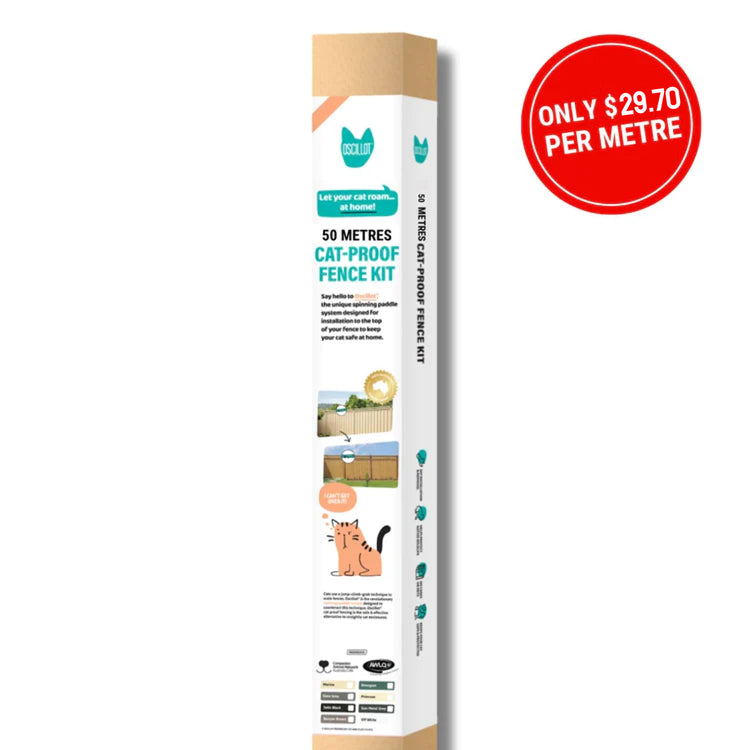
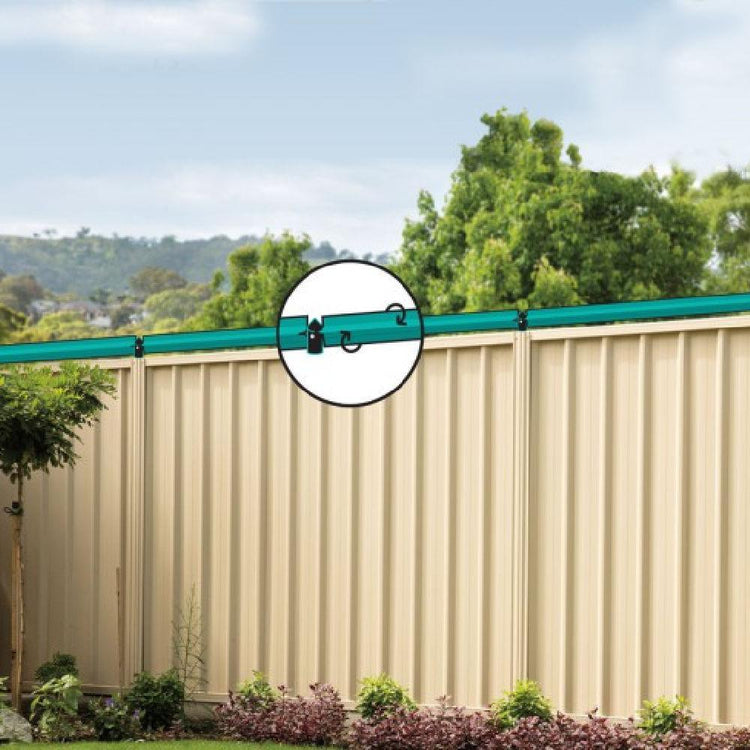

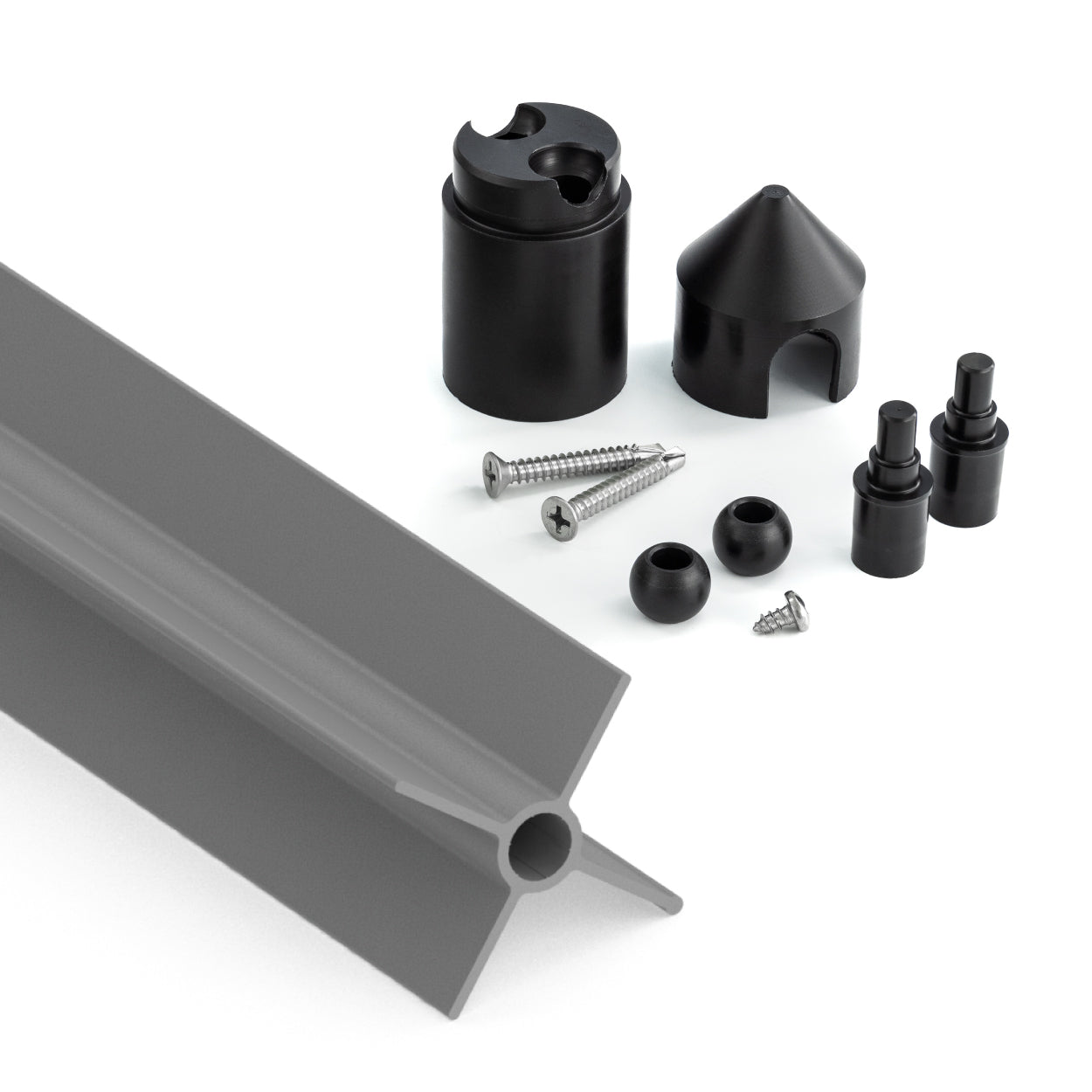



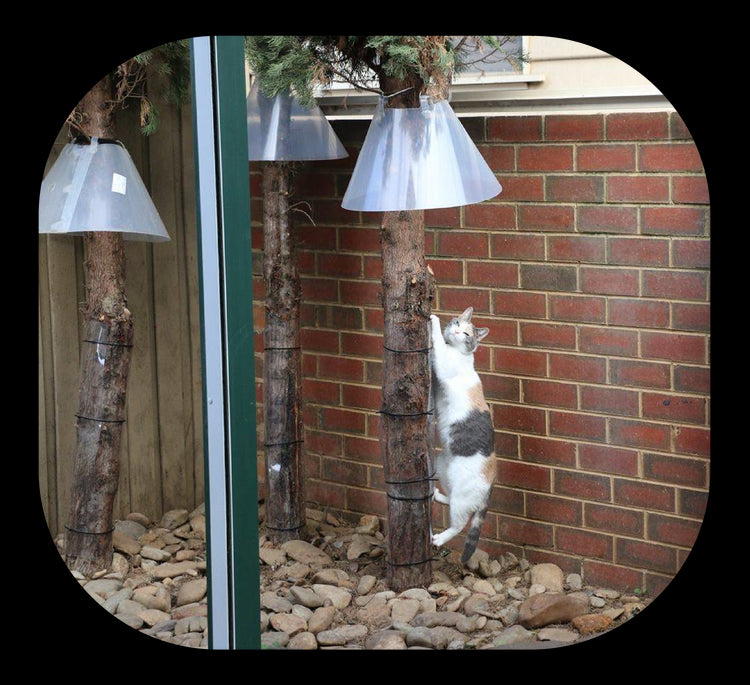
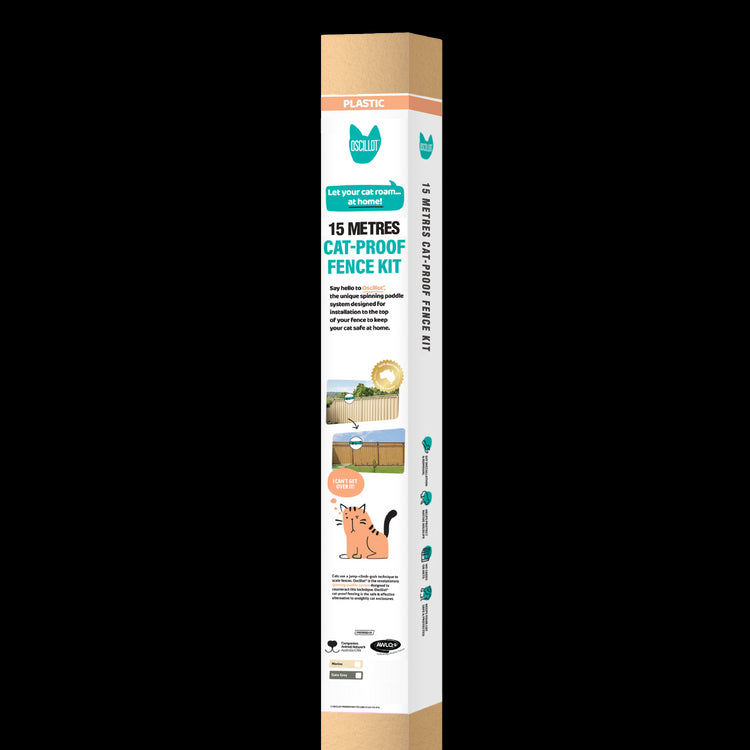
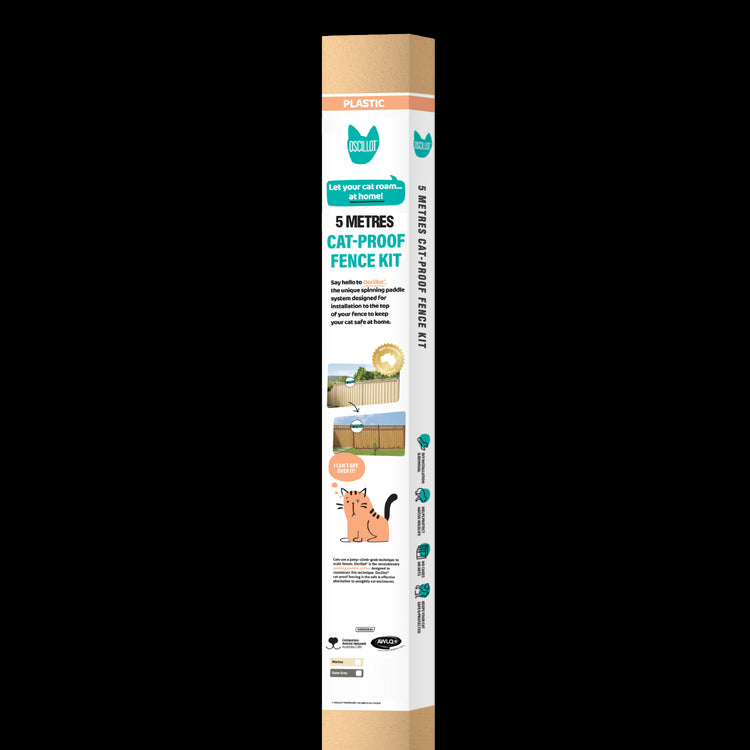

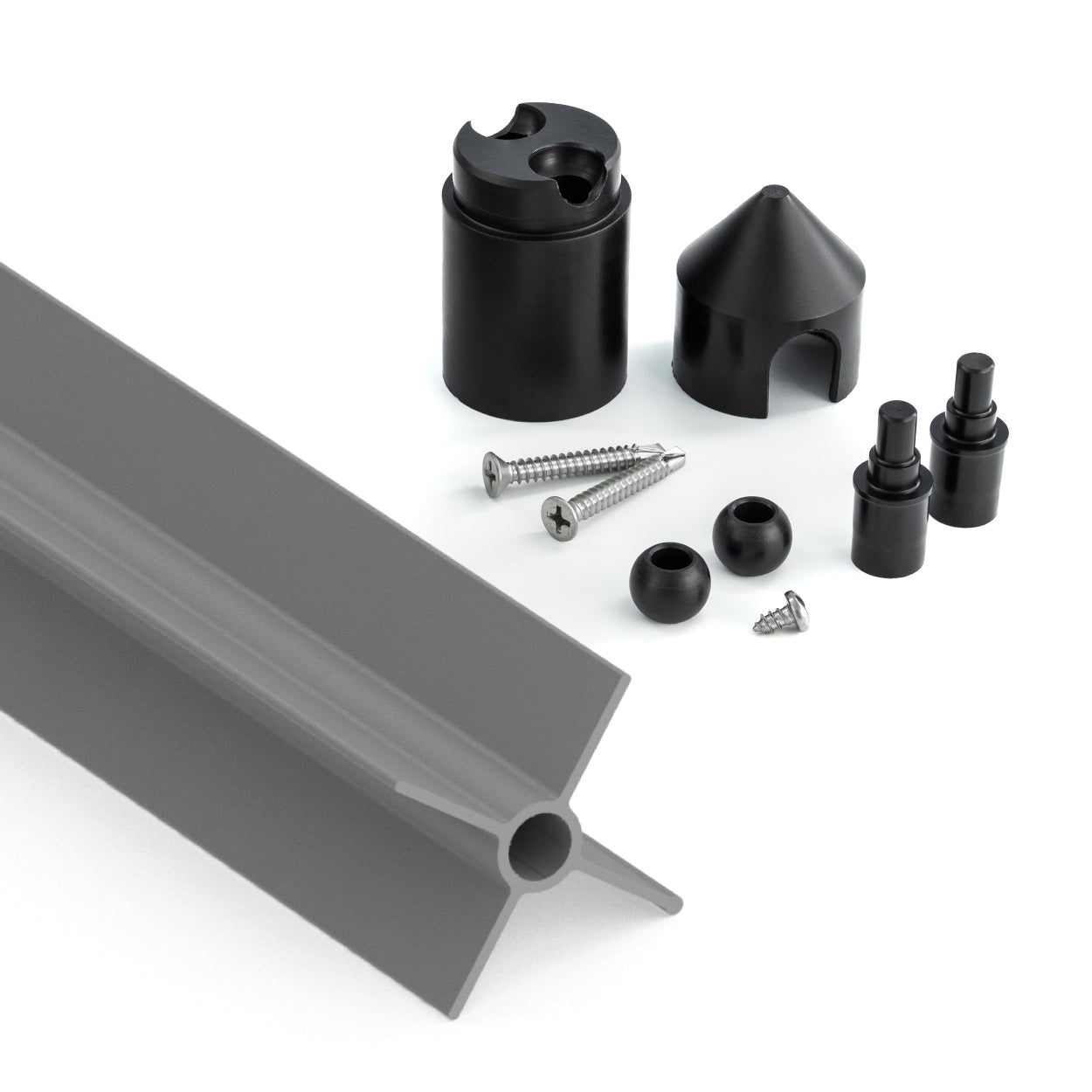
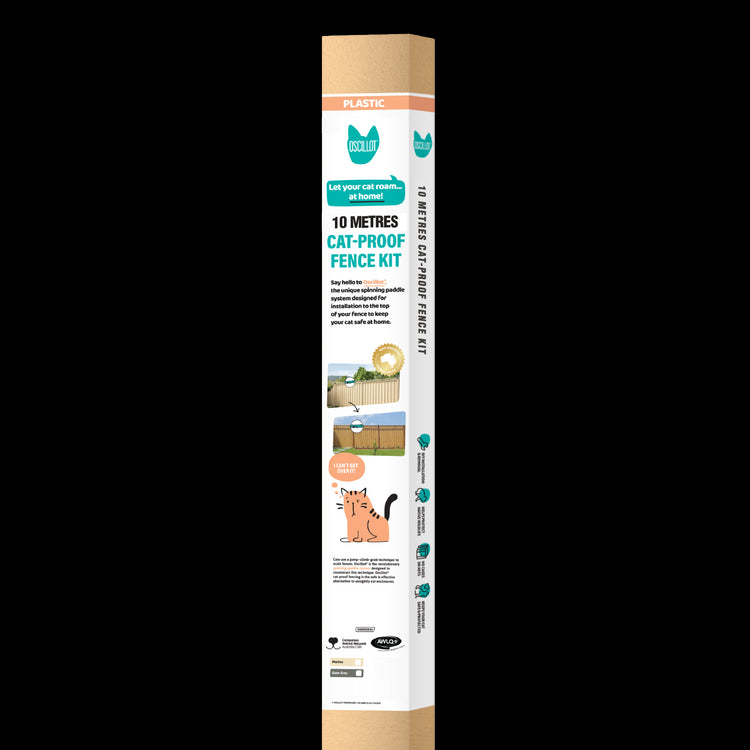
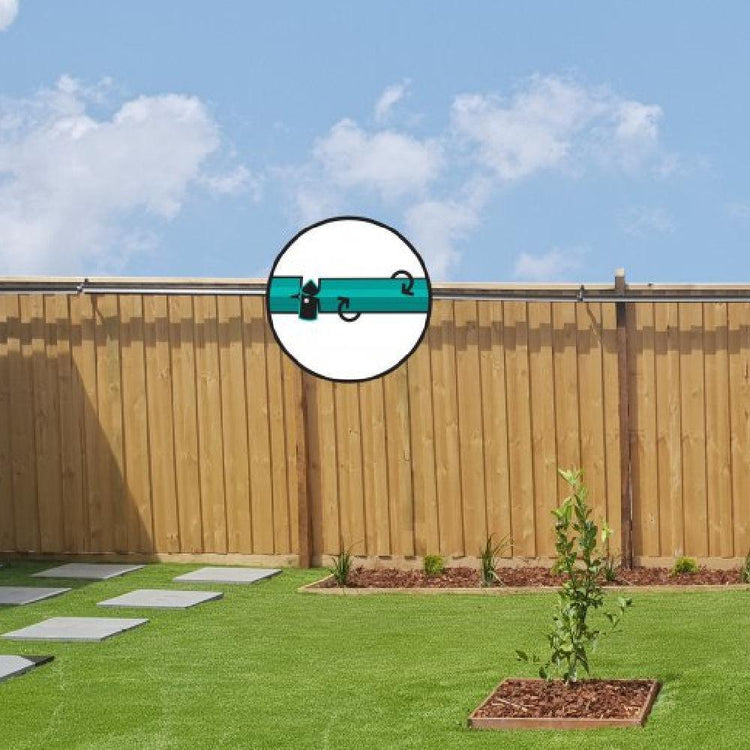
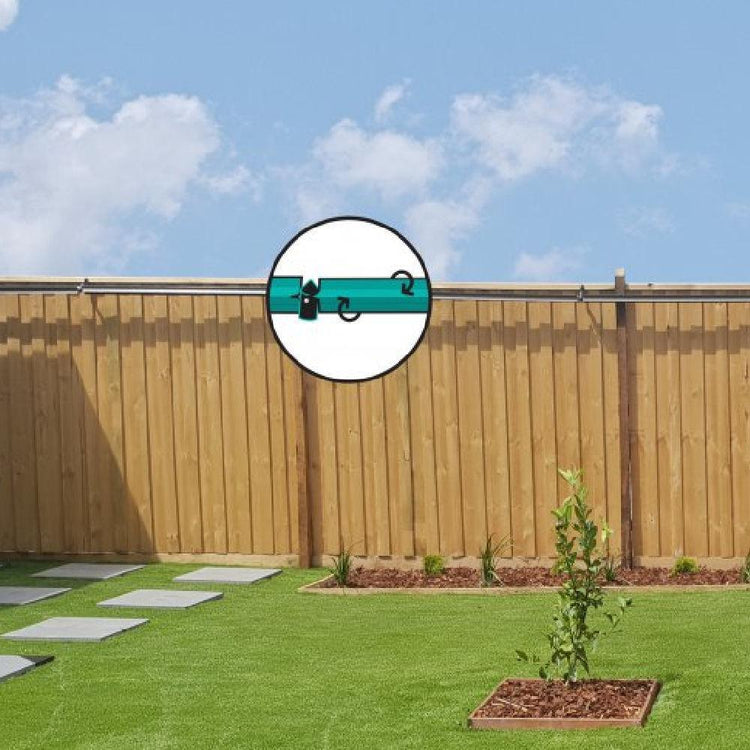
Leave a comment